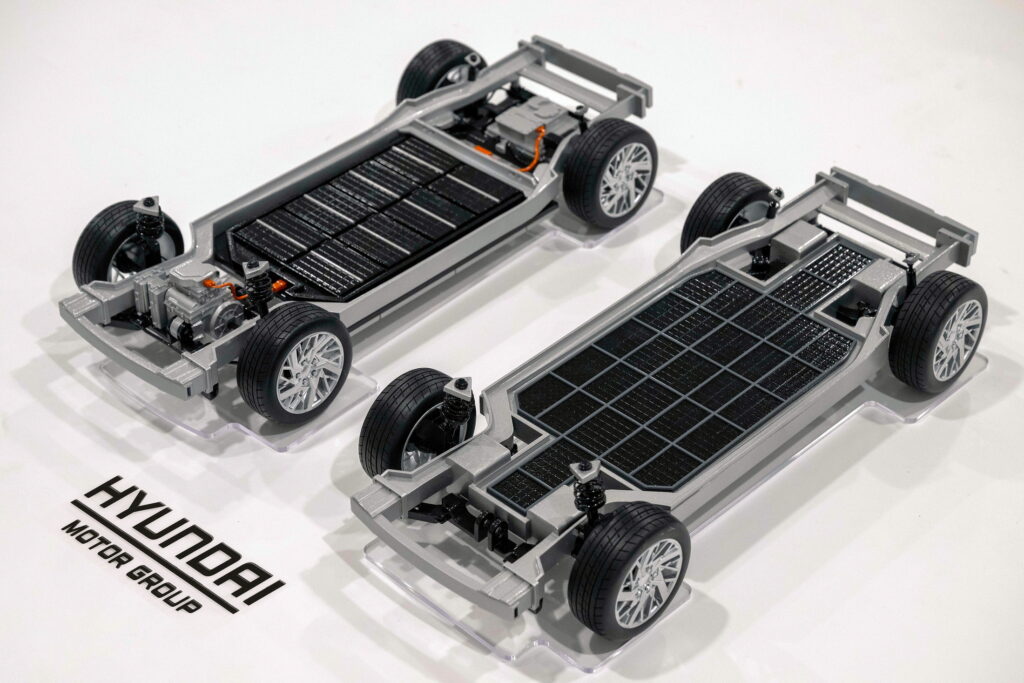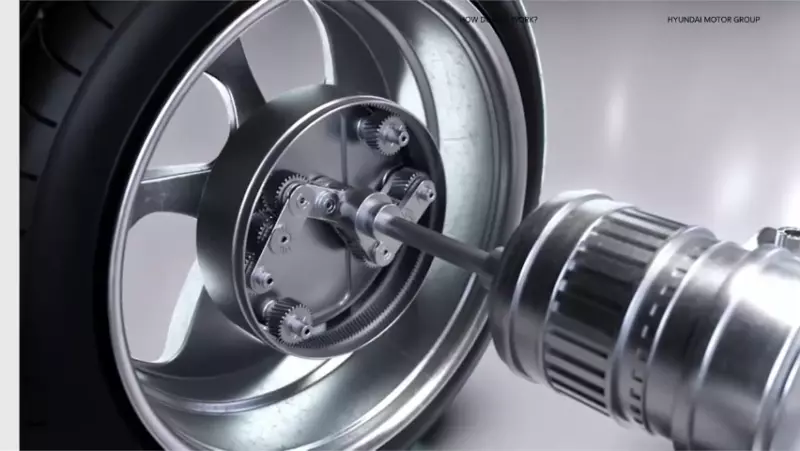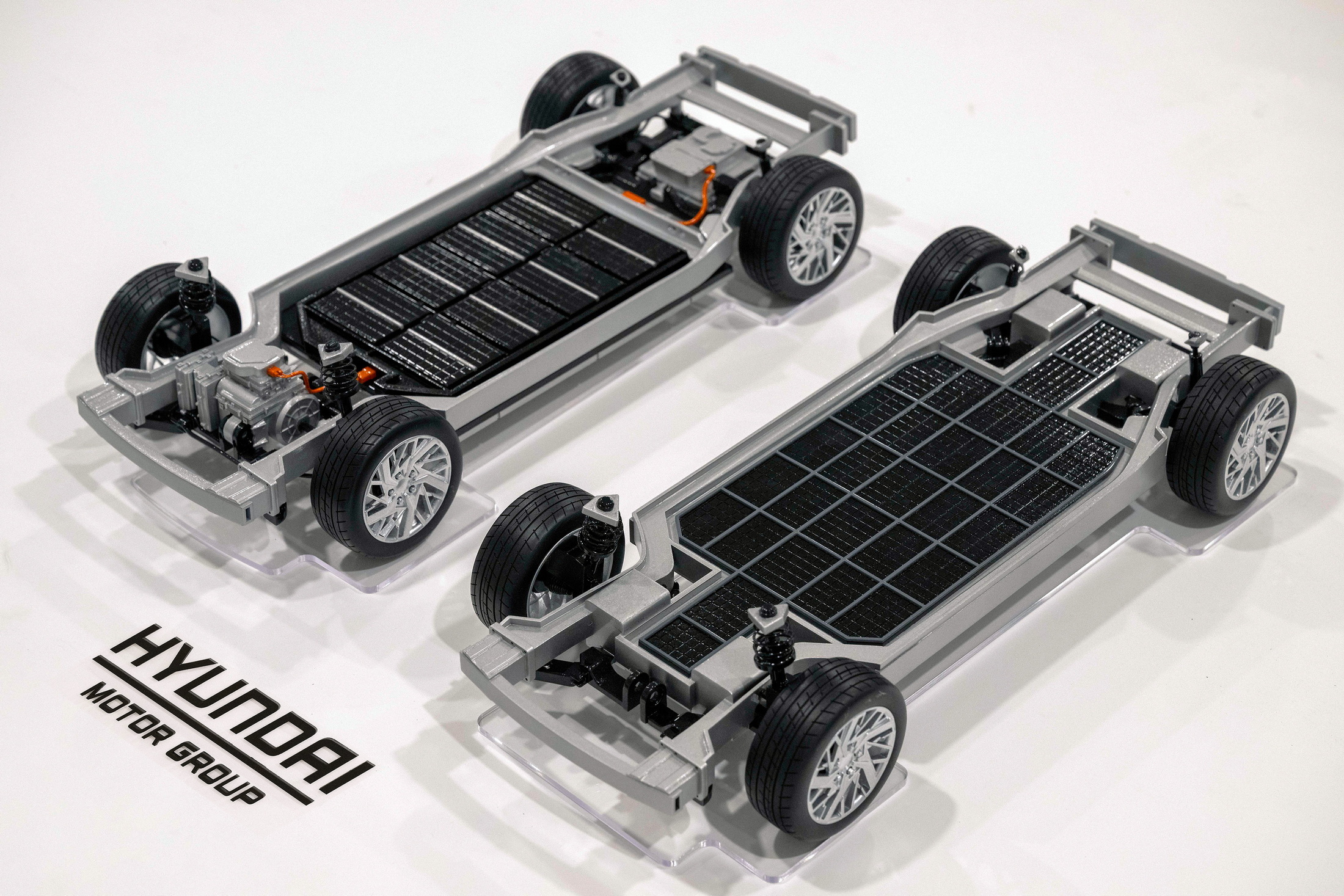Automakers love to brag about how much more room electric vehicles will free up for passengers. However, electric drive units are still pretty big. Hyundai claims it has come up with a new technology that will allow it to shrink its motors significantly, opening up more room for people and their things.
Named the ‘Uni Wheel,’ it represents the automaker’s latest technological innovation. Similar to an in-hub motor, the universal wheel drive system relocates certain drive components required by an electric car inside the wheel. However, the power unit remains positioned outside the wheel.
Instead, the Uni Wheel relocates the reduction gear into the wheel hub, effectively reducing the motor’s size. This innovation enables Hyundai to employ one small motor per wheel, rather than relying on a large drive unit for the entire axle.
Read: Toyota’s Solid-State Batteries Will Be Limited To ‘Tens Of Thousands’ Of Cars In 2030

By employing a series of gears located inside the wheel, the power from even a small motor is transmitted to the wheel with enough torque to move a vehicle. As many have pointed out, powering each wheel individually has advantages for performance driving, and for safety, by allowing each corner of the vehicle to respond independently to its circumstances.
The wonders of the Uni Wheel don’t stop there, though. Because of the way that the gears are organized, they can move within the hub while still transferring power. As a result, the connection between the wheel and the motor can slide up and down freely, so the wheel doesn’t require a CV joint. That means that the efficiency losses associated with operating such a connection at an angle are eliminated, improving power delivery and driving range.
The Uni Wheel as compared to a traditional wheel with a CV joint
The freedom afforded by the technology allows engineers to control the ride height of the vehicle more liberally. Since there isn’t a single sweet spot where the CV joint is transmitting power efficiently, vehicles equipped with a Uni Wheel (and an air suspension, say) could squat down for aerodynamic highway driving or rise up more ground clearance without compromising performance.
Hyundai says that the Uni Wheel could be squeezed inside wheels as small as four inches in diameter, which would be ideal for personal mobility devices. It can also be scaled to work in wheels up to 25 inches in size for larger vehicles, like cars and SUVs.
The company says it has tested the unit for durability, and indicates that the Uni Wheel is performing well. Unfortunately, The Korea Times reports that Hyundai isn’t yet ready to say when the Uni Wheel will be ready to enter production, but it has filed patents in key markets, such as Korea, Europe, and the United States.
“We are happy to be able to present innovative ideas that could be game changers in the future mobility market,” said Park Jong-sul, senior research fellow at the Hyundai Motor Company and Kia Advanced Technology Institute, as translated by Google. “We are developing technology so that customers can experience mobility in a completely different and new way than before.”














